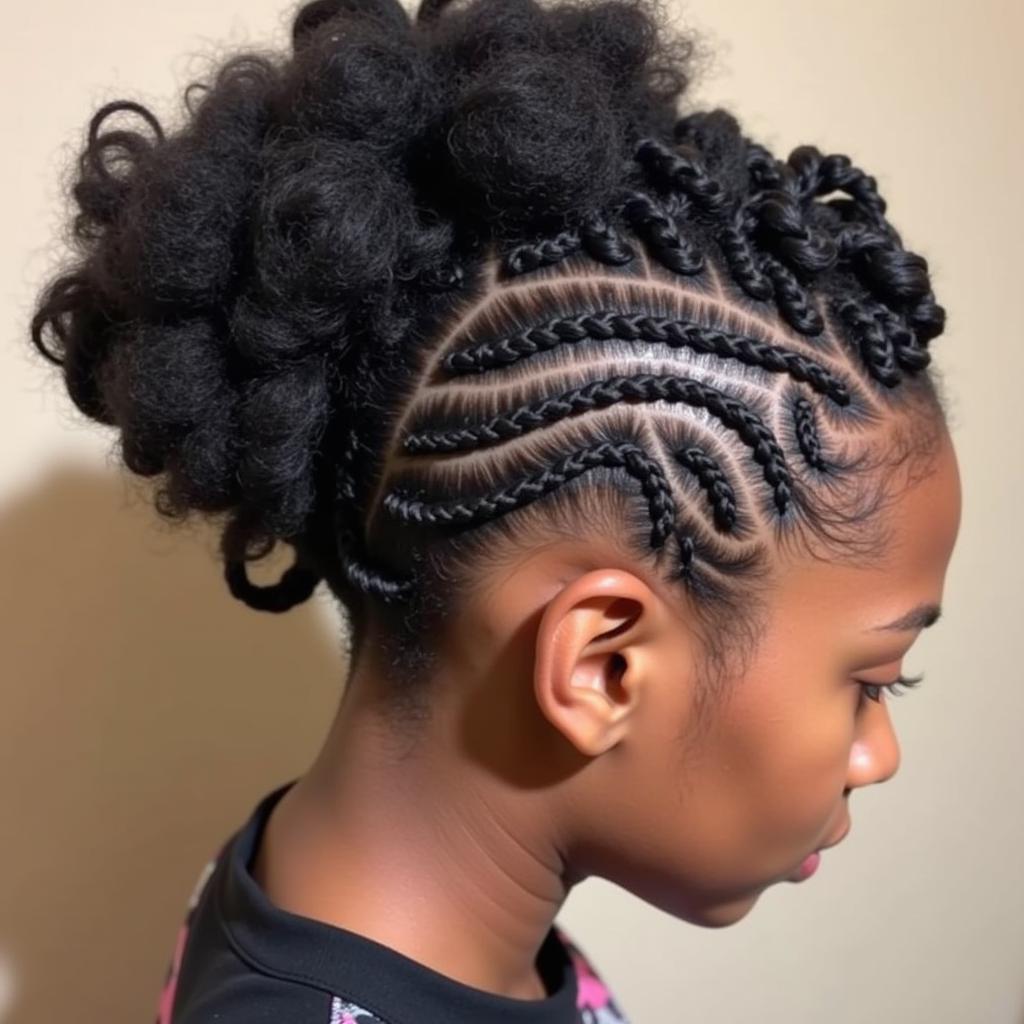Understanding African American Skin Tones Chart
African American skin tones are beautifully diverse, encompassing a rich spectrum of shades and undertones. Understanding the nuances of an African American Skin Tones Chart can be invaluable for various purposes, from makeup selection to skincare routines and even in fields like photography and design. This article dives deep into the complexities of African American skin tones, exploring the factors that influence them and debunking common misconceptions.
Many people search for an “African American skin tones chart” hoping to find a definitive guide to categorize and label these diverse shades. However, skin tone is a complex interplay of genetics, melanin production, and environmental factors. While a simple chart can be a starting point, it’s crucial to recognize the individual variations and avoid generalizations.
Decoding the African American Skin Tones Chart: Beyond Simplification
While a visual chart can be helpful in visualizing the range of African American skin tones, it’s essential to understand its limitations. Often, these charts categorize skin tones into a limited number of groups, which can oversimplify the spectrum. Furthermore, focusing solely on surface color ignores the crucial role of undertones. Understanding undertones – whether cool, warm, or neutral – is key to finding the most flattering makeup shades and clothing colors.
One way to understand the range is by exploring descriptions like “African brown texture,” which helps highlight the richness and depth of the melanin present in African American skin. This focus on texture helps move beyond simple color categorization and emphasizes the unique qualities of the skin.
The Science Behind Skin Tone: Melanin and More
Melanin, the pigment responsible for skin color, is produced by specialized cells called melanocytes. The amount and type of melanin produced determines an individual’s skin tone. While everyone has roughly the same number of melanocytes, the amount of melanin they produce varies greatly, influenced by genetic factors and sun exposure. Eumelanin, the most common type of melanin, produces brown and black pigments, while pheomelanin produces red and yellow pigments. The interplay of these pigments contributes to the wide array of skin tones observed within the African American community.
Why Understanding Your Skin Tone Matters
Knowing your skin tone and undertone has practical implications across various areas. For makeup application, selecting foundation, concealer, and other products that match your undertone is essential for achieving a natural and flawless look. Choosing the right skincare products can also be influenced by skin tone, as certain skin types may be more prone to specific conditions. Even in fashion, understanding which colors complement your skin tone can significantly enhance your overall appearance.
African American skin undertones
What are the different undertones in African American skin?
African American skin can have warm, cool, or neutral undertones. Warm undertones have a golden or yellow hue, cool undertones have a reddish or bluish hue, and neutral undertones are a balanced mix of both.
How do I find my undertone?
Look at the veins on your inner wrist. If they appear blue or purple, you likely have cool undertones. If they appear green, you likely have warm undertones. If they appear bluish-green, you probably have neutral undertones.
Dr. Anika Noni Rose, a leading dermatologist specializing in skin of color, states, “Understanding your undertone is crucial for achieving a harmonious and natural look with makeup. It’s the key to finding the perfect foundation match and enhancing your natural beauty.”
Beyond the Chart: Embracing Individuality
While an African American skin tones chart can be a useful starting point, it’s crucial to remember that it cannot capture the full spectrum of human diversity. Each individual’s skin tone is unique, and there is no single “correct” way to categorize or label it. Embracing this individuality and appreciating the beauty of all skin tones is paramount. Choosing the right wig, like an African American lace front wig, also relies on understanding your unique skin tone. Finding the right shade and texture will complement your natural beauty.
African American lace front wigs
Conclusion: Beyond the African American Skin Tones Chart
Understanding African American skin tones is a journey of appreciation and discovery. While a chart can provide a basic framework, it’s essential to delve deeper into the science, genetics, and individual variations that contribute to this beautiful spectrum of colors. By embracing individuality and recognizing the complexities of skin tone, we can move beyond simplistic categorizations and celebrate the richness and diversity of African American skin.
African American skin color chart
FAQ
- What is the purpose of an African American skin tones chart?
- Are African American skin tones chart accurate?
- What factors influence African American skin tone?
- How can I determine my undertone?
- Why is understanding my skin tone important?
- What are some common misconceptions about African American skin tones?
- Where can I find more resources on African American skin care?
For further information and personalized assistance, please do not hesitate to contact us. Call: +255768904061, Email: kaka.mag@gmail.com or visit us at Mbarali DC Mawindi, Kangaga, Tanzania. We have a 24/7 customer service team ready to assist you.


